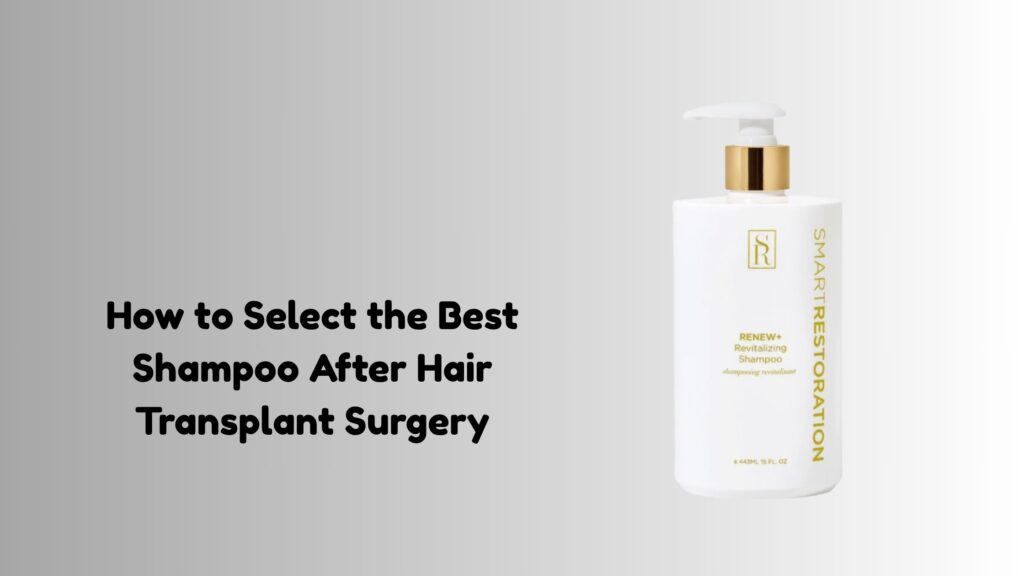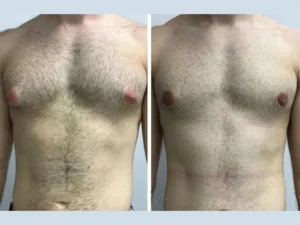
best shampoo after hair transplant
Getting a hair transplant is a major step toward regaining confidence and restoring your hairline. However, the surgery is just the beginning. Selecting the appropriate shampoo is one of the most vital aspects of aftercare, which is essential to the procedure’s effectiveness. The best shampoo after hair transplant helps ensure your scalp heals properly, your grafts remain secure, and your new hair grows in strong and healthy.
In this article, we’ll help you understand what makes a shampoo ideal for post-transplant care, what ingredients to look for, what to avoid, and when to start using it.
Understanding Your Scalp After a Hair Transplant
After surgery, your scalp enters a delicate healing phase. The newly transplanted follicles are vulnerable, and the surrounding skin may be red, swollen, or sensitive. Using a harsh or inappropriate shampoo during this time can interfere with the healing process, cause irritation, or even dislodge grafts before they properly root.
Because of this, choosing the best shampoo after a hair transplant is a medical choice rather than merely a cosmetic one. Your shampoo must support healing, protect the skin, and provide a nurturing environment for new follicles.
What Makes a Shampoo Suitable After Hair Transplant Surgery?
Choosing the right shampoo isn’t about brand hype; it’s about ingredients and formulation. Here’s what to look for:
1. Gentle, Non-Irritating Formulas
The first rule in post-transplant care is to avoid shampoos with harsh chemicals. Many commercial shampoos contain sulfates & parabens, which can deplete your scalp of its natural oils & delay the healing process. The best shampoo after hair transplant will be sulfate-free and paraben-free to ensure gentle cleansing without irritation.
2. Fragrance-Free or Hypoallergenic
Artificial fragrances may smell pleasant, but they can trigger allergic reactions or itchiness—especially on a healing scalp. Go for fragrance-free or hypoallergenic options to reduce the risk of discomfort.
3. Healing and Soothing Ingredients
Post-surgical shampoos should include ingredients that help calm and repair the skin. Look for aloe vera, panthenol (pro-vitamin B5), niacinamide, and marine collagen. These soothe inflammation, boost hydration, and support skin regeneration.
4. DHT-Blocking Compounds
For patients experiencing pattern hair loss, ingredients that inhibit DHT (dihydrotestosterone)—such as saw palmetto or caffeine—can protect existing hair and prevent further thinning. These are especially useful in long-term hair maintenance after the transplant.
5. pH-Balanced Formulas
The natural barrier of your scalp might be damaged by an overly acidic or alkaline shampoo. The best shampoo after hair transplant will have a balanced pH level to keep your scalp healthy and prevent dryness or flaking.
When and How to Use Shampoo After Hair Transplant
Days 0–2:
Avoid using shampoo altogether. Your scalp needs rest, and the grafts must remain undisturbed. Do not touch, wash, or apply any product.
Days 3–7:
Begin gentle rinsing with a mild, sulfate-free shampoo. Pour the shampoo into your hands, lather lightly, and gently dab onto the scalp—no rubbing or scrubbing. Rinse with lukewarm water & pat dry with a soft towel.
Weeks 2–3:
At this stage, the healing process is underway. You can start using a more nutrient-rich shampoo that contains healing and strengthening ingredients. The best shampoo after hair transplant at this point will support hair shaft strength, reduce inflammation, and keep the scalp clean without disrupting new growth.
After 1 Month:
Transition to DHT-blocking shampoos to maintain existing hair and promote stronger regrowth. Continue using a pH-balanced, gentle shampoo regularly to keep your scalp healthy.
Common Ingredients to Avoid
When selecting a post-transplant shampoo, be sure to avoid the following:
- Sulfates (SLS, SLES): Dry out the scalp and disturb healing
- Artificial Fragrances & Dyes: Can irritate sensitive skin
- Alcohol & Menthol: Cause dryness and disrupt natural oil balance
- Scrubbing/Exfoliating Agents: Too harsh for healing follicles
Using the wrong shampoo with these ingredients can significantly impact your recovery and results.
Best Practices for Shampooing After Hair Transplant
- Use lukewarm water: Hot water can inflame the scalp
- Dab, don’t rub: Prevents damaging fragile grafts
- Dry with a soft towel: Avoid friction or pressure on the scalp
- Watch for signs of irritation: Redness, itching, or flaking may indicate product sensitivity
The best shampoo after hair transplant won’t just clean—it will nurture your scalp while minimizing any post-op discomfort.
Recommended Products
Look for shampoos labeled as “post-surgical,” “for sensitive scalp,” or “DHT-blocking.” Formulas like Revitalizing Shampoo and DHT Blocking Shampoo from professional clinics are often specially designed for transplant patients. These usually contain biotin, collagen, and herbal extracts that help heal and protect your hair and scalp.
Final Thoughts
Selecting the best shampoo after hair transplant is a vital part of your recovery process. The right shampoo protects your new grafts, reduces irritation, and helps your hair grow in stronger and healthier. Avoiding harsh ingredients and choosing gentle, healing formulas will give you the best chance at optimal results.
If you’re unsure about what product is right for your hair type or surgery method, consult your hair restoration clinic. At Beverly Hills Hair Restoration, our team provides personalized post-transplant care and product recommendations to ensure your results are long-lasting and natural-looking.





